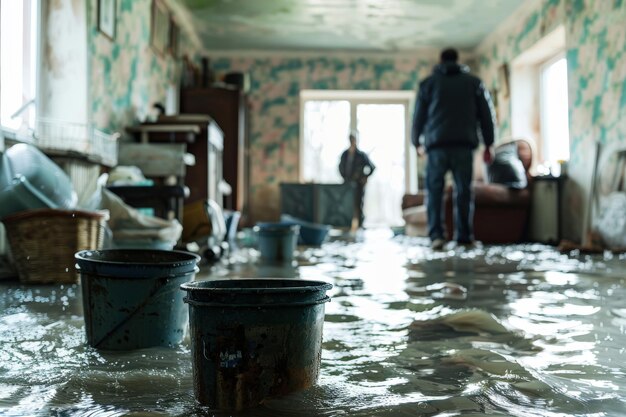Is Flood Insurance Right for You? Here's What You Need to Know
Imagine waking up to find your living room submerged in water. It’s not just the emotional and physical toll that’s daunting in such a scenario, but the financial burden can be overwhelming. Flood insurance is designed to protect against that exact financial risk, but do you really need it? Let’s break down the essentials to help you make an informed decision.
Understanding Flood Insurance
Flood insurance provides coverage for damages specifically caused by flooding. It typically covers structural damage to your home as well as personal belongings inside. However, it's important to note that standard homeowners insurance does not cover flood damage.
You might think you're not at risk, but floods are the most common and costly natural disaster in the United States. Whether you live in a high-risk area or not, a flood can happen anywhere, especially with changing weather patterns.
Factors to Consider
- Location: If you live in a designated high-risk flood zone, mortgage lenders often require flood insurance. However, many floods occur in low-to-moderate risk areas as well.
- Cost: Pricing depends on your home’s elevation, the flood zone designation, and the amount and type of coverage you desire. Premiums in flood-prone areas will be higher, but avoiding the potential catastrophic loss is often worth the investment.
- Government Programs: The National Flood Insurance Program (NFIP) offers flood insurance to property owners. It might be wise to check if your community participates in the NFIP.
Beyond Flood Insurance: Financial Safety Nets
Even with insurance, recovery can be slow and costly, which is why understanding available financial assistance programs is crucial. Here are some avenues to consider:
Government Aid Programs
- FEMA Assistance: The Federal Emergency Management Agency (FEMA) provides grants for temporary housing and essential home repairs for primary residences.
- SBA Loans: The Small Business Administration offers low-interest disaster loans to help cover repair and replacement costs for homes and property.
Financial Institutions and Debt Relief
- Loans and Credit Lines: Consider opening a line of credit or exploring small personal loans for fast access to liquidity during emergencies.
- Debt Consolidation: Streamline existing debts to free up cash flow for emergency expenses.
Credit Card Solutions
- 0% APR Credit Cards: Some credit cards offer an introductory 0% APR period, allowing you to pay off emergency expenses without incurring interest for a set period.
Educational Grants and Workshops
- Disaster Preparedness Courses: Equip yourself with knowledge on handling natural disasters effectively.
- Financial Planning Workshops: Learn how to budget for emergencies and improve your overall financial health.
Whether you’re evaluating your need for flood insurance down the line or seeking immediate solutions during recovery, understanding your options can arm you with peace of mind and financial security.
Financial Assistance and Tools Checklist 🏡📝
- National Flood Insurance Program (NFIP)
- FEMA Aid: Grants for temporary housing and essential repairs
- SBA Disaster Loans: For low-interest repair costs
- 0% APR Credit Card Offers: Interest relief for emergencies
- Credit Counseling: Professional guidance on debt consolidation
- Disaster Preparedness Courses: Enhance your emergency readiness skills
- Financial Planning Workshops: Improve budgeting for unexpected crises
A bit of forethought and planning can prevent heartbreak and financial ruin should disaster strike. Make informed decisions today to secure your future.
